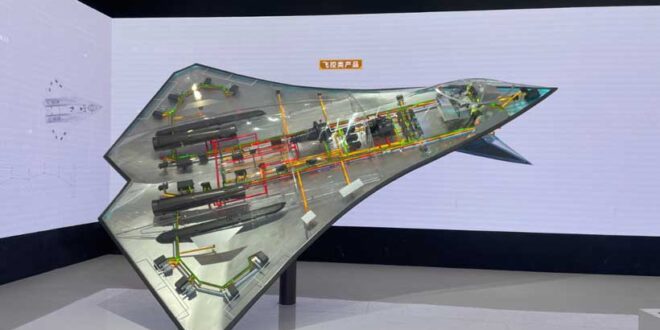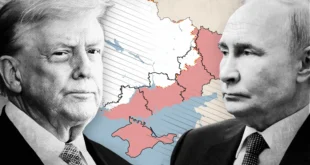On December 26, 2024, the world was surprised by the appearance of an airshow of a Chinese fighter jet, which is allegedly a prototype of China’s sixth-generation fighter jet. This sparked concern for the United States because the United States had previously predicted that China would still need ten to twenty years to develop the sixth-generation fighter jet (Tempo, 2025). Looking at the current reality, this is a threat to the United States due to China’s increasing military capabilities, especially in the Asia-Pacific region, so this triggers a security dilemma for the United States due to China’s increased military power.
Security Dilemma is a concept in international relations where a country feels threatened by the increase in security of other countries even though the real intention is to be defensive, but other countries consider it a threat to them. This concept was first expressed by John Herz and is one of the concepts that entered the theory of realism. Realism considers this world or the international system to be anarchy, or there is no higher authority to regulate countries, let alone guarantee the security of a country. From this, we can answer why there can be a security dilemma by the United States, because the absence of a higher authority to regulate the country, let alone guarantee security, finally causes one country to become suspicious (Jie & Mingjiang, 2023), and in this context, the United States feels threatened by the rise of China’s military capabilities so that the United States has to present its military strength, especially in the Asia-Pacific region, and this also ends up triggering China to continue to improve its military capabilities.
If we trace the Chinese military to the beginning of a revival in the 90s, especially after the Taiwan Strait incident in 1995-1996, where China felt left behind by US military power, because at that time China was holding a ballistic missile test in the waters near Taiwan in response to the visit of Taiwanese President Lee Teng-hui to the United States. Seeing this, the United States immediately deployed two groups of aircraft carriers to show how superior its military was and, at the same time, warn China not to mess with Taiwan, and from then on China realized how far behind China’s capabilities were compared to the United States.
Since then, China has felt the need to increase its defense spending budget to increase China’s military modernization, especially in terms of military technology. Until 2015, Chinese president Xi Jinping ordered the PLA to improve the efficiency and combat readiness of the Chinese military (South China Morning Post, 2024). The realization can be seen with the reduction in the number of Chinese army personnel and the focus on advanced military technology such as the DF-17 missile, the 5th generation J-20 aircraft, drones, and artificial intelligence for the military, to the latest, now the presence of a prototype of China’s sixth-generation aircraft. After seeing how China’s military capabilities are rising, it raises concerns for the US that its dominance in the Asia-Pacific is beginning to be eroded. So that the US presence in the Asia-Pacific is increased, and this has the potential to heat up the existing situation.
The impact of the modernization of China’s military power is the beginning of a balance of power that occurs in the Asia-Pacific region. It can be seen that the formation of alliances or defense pacts such as AUKUS in response to China’s increasing military power in the Asia-Pacific region (Puspa Sari et al., 2024), then the intensification of the US military presence in the region, such as the deployment of medium-range missile systems in the Philippines (Reuters, 2024), and increased regional cooperation with US allies such as Japan and South Korea, which are in fact opposite to China. This response was a reaction to China’s modernization and military revival aimed at balancing power in the region (Puspa Sari et al., 2024), but with the response given by the United States, it increased tensions to trigger regional instability.
Seeing the tense situation due to the US decision to balance power, this method is not a solution to this security dilemma. Some of the things that can be done are to focus on strengthening diplomacy and building good dialogue between countries in the region, such as reopening military communication channels between the US and China to prevent misunderstandings so that the escalation does not become large (Kompas, 2023). Then make a regular security dialogue like the one held in September 2024 between US commanders and Chinese military commanders to prevent military misunderstandings between the two countries.
Then the United States should restrain or limit the deployment of military force, such as the deployment of offensive missile systems, to avoid a Chinese military response that sees it as a threat to them. And use forums such as ASEAN or increase the role of multilateral diplomacy to assist dialogue so as to avoid misunderstandings related to increased military power. China also needs to be transparent about the publication of China’s Defense White Paper so that the goal of military modernization does not make the United States suspect that China wants to engage in conflicts in the region. With this transparency, it is an important step to communicate to the international community the intention of increasing China’s military so as to reduce tensions, miscommunication, and the potential for conflict escalation.
China’s increasing military power has created a security dilemma, especially for the United States in the Asia-Pacific. The U.S. response of increasing its military presence to the formation of alliances in the region is a way to balance forces but actually worsens the situation and can trigger regional instability. Therefore, there needs to be a regular dialogue between the US and China to avoid misunderstandings between the two sides regarding the increase in power, and there needs to be transparency in the defense White Paper so that the intention to increase its military capabilities is not mistaken for a threat. With these measures, the security dilemma can be effectively reduced, tensions can be reduced, regional balance can be found, and peace can be maintained, especially in the Asia-Pacific region.
 Geostrategic Media Political Commentary, Analysis, Security, Defense
Geostrategic Media Political Commentary, Analysis, Security, Defense





